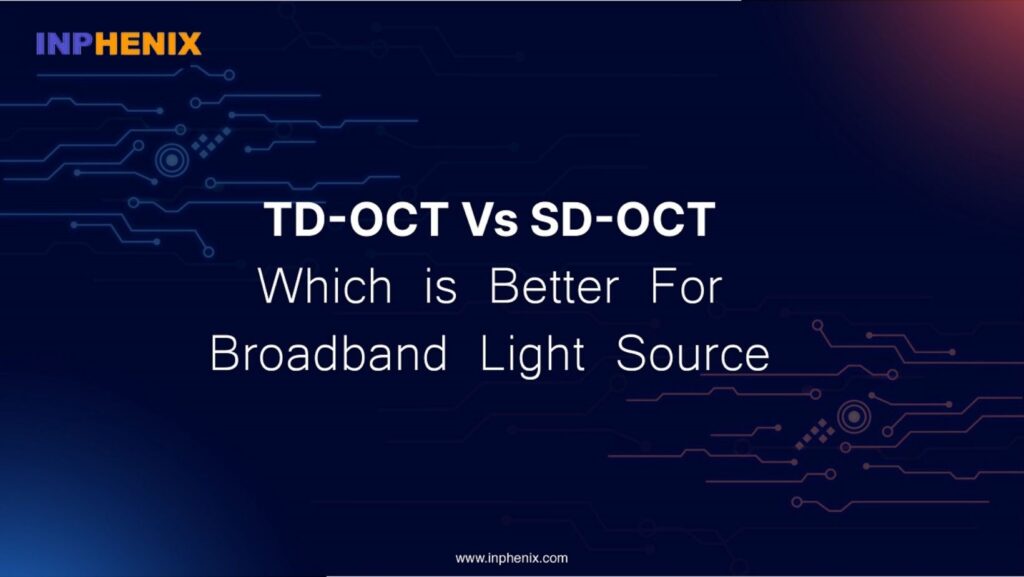
Optical coherence tomography (OCT) is a rapidly growing, advanced technology that has transformed ophthalmology practice. Thin films may be characterized non-destructively and without touch using optical methods. OCT is widely employed in the medical profession (e.g., ophthalmology). It is based on low-coherence interferometry, and a focused probe may be utilized to acquire the reflectivity profile of material along an optical axis.
There are two basic OCT approaches in particular. The first and most recent technology is known as spectral-domain optical coherence tomography (SD-OCT) or Fourier domain OCT, and it uses a broadband light source. The standard method is known as time domain optical coherence tomography (TD-OCT).
In this blog, we will examine how SD-OCT differs from regular TD-OCT and what advantages SD-OCT has over TD-OCT. But first, let’s find out what is time-domain OCT imaging.

With the Stratus OCT, time-domain OCT imaging was done by shifting the reference mirror, and the depth information of the retina is acquired as a function of time. A spectrometer is used to detect the light spectrum from the interferometer. The interference spectrum data is then Fourier converted to provide axial retina measurements. The TD-OCT will be presented first, as the SD-OCT employs comparable hardware with a few tweaks.
Because of their analogous principles, TD-OCT is sometimes compared to ultrasound, with OCT employing light as its medium and ultrasound using sound. Although spectral-domain OCT has been proven to increase visualization of broadband light source structures, quantification of macular thickness has yet to be verified. It is unclear if spectral-domain OCT’s greater sample rate and enhanced scan resolution would improve measurement reliability.
SD-OCT allows high-resolution, optical cross-sectional, and en-face examination of the retina, RPE, and choroid with depth-resolved segmentation. It has been used most commonly in retinal clinics. It has been proven to measure and quantify atrophy and has been utilized as a crucial adjunct in major clinical investigations.
With anatomic tracking features, the overlay of baseline and follow-up pictures allows for an examination of the progression of dry AMD. As a result, longitudinal SD-OCT scanning is a sensitive approach that may identify structural changes in drusen-associated atrophy before GA development as determined by CFP or FAF.
The most recent kind of OCT is spectral domain OCT, which uses a broadband light source and a spectrometer to measure and preserve the reading. A low-loss spectrometer in the detector arm detects the spectrum of the interferometer’s interference pattern of light returned from the reference and sample arms. Spectral-domain OCT has quickly become vital for research, diagnosis, monitoring, and screening of illnesses affecting the macula and optic nerve head.
A desirable feature of an OCT system is high spatial resolution, which necessitates the use of a broadband light source with a wider spectral width or a very short coherence length. Because OCT is a technique that employs a broad-spectrum light source. According to this principle, a beam of light is directed into the eye’s retina. The detector detects the reflected light, which is then compared to the reference light beam to determine the echo time delay.
This principle is the same for both SD-OCT, which is based on a broadband light source, and a conventional technique called TD-OCT. Compared to traditional TD-OCT, SD-OCT showed statistically significantly better reproducibility in measuring macular thickness and the RNFL sector around the papilla in most sectors.
The information is obtained from a mechanically moving reference mirror. In contrast, in spectral region OCTs based on broadband light sources, the reference mirror is stationary. There was no statistically significant difference between the average overall macula or RNFL reproducibility, or the identification of TD-OCT and SD-OCT glaucoma.
There are various benefits connected to using a broadband light source based on SD-OCT. The following are a few of the major advantages.
You now have a better understanding of how broadband Light source-based SD-OCT outperforms TD-OCT. Given all of the advantages and features of broadband light source-based SD-OCT, it is worth noting that this technology has revolutionized the therapeutic field.
Inphenix is a US-based light source manufacturer that specializes in optical devices such as swept-source lasers, Fabry Perot lasers, gain chips, distributed feedback lasers, and VCSELs. Our products are cutting-edge and work with a broad variety of devices.
